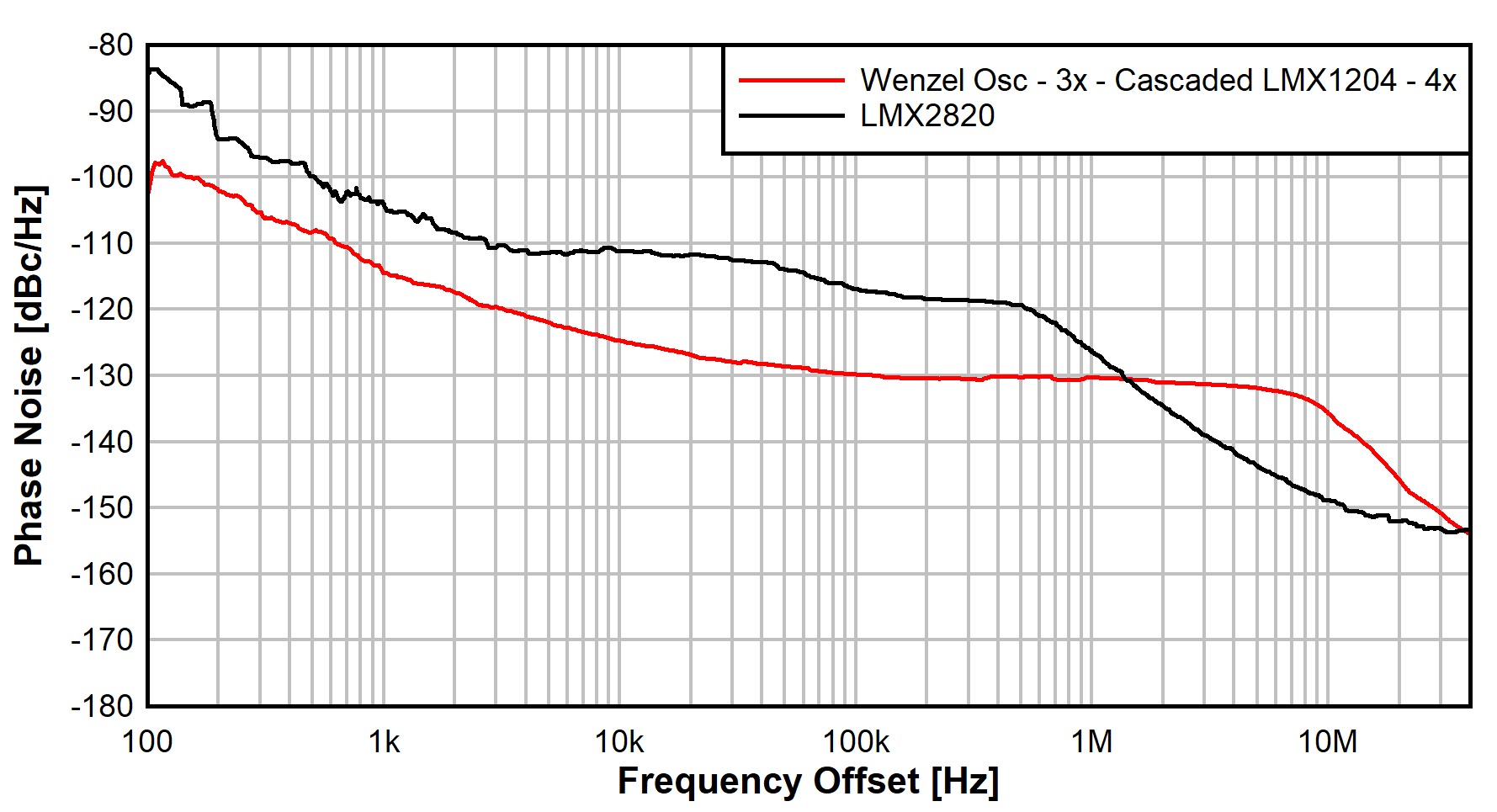SNAA366 October 2022 LMX1204
2.3 LMX1204 Multiplier vs RF Synthesizer
A natural question is whether using the multiplied-up reference is a better alternative than simply an integrated RF synthesizer like the LMX2820. Figure 2-5 shows the phase-noise comparison between the LMX1204 multiplier and the LMX2820 operating at 5898.24 MHz. The LMX2820 uses the 491.52 MHz Wenzel oscillator as the reference frequency. Table 2-4 reports the integrated jitter performance.
 Figure 2-5 Phase-Noise Comparison Between
LMX1204 Multiplier and LMX2820
Figure 2-5 Phase-Noise Comparison Between
LMX1204 Multiplier and LMX2820| Frequency | Source | RMS Jitter |
|---|---|---|
| 5898.24 MHz | 3 × Wenzel Oscillator + 4 × Cascaded LMX1204 | 33.2 fs |
| LMX2820 | 36.0 fs |
THE LMX1204 with multiplier generally performs as good or better than the LMX2820. Low frequency offset phase noise performance is better with the LMX1204 multiplier out to about 1 MHz. After which, the LMX2820 performs better. The integrated RMS jitter is slightly better with the LMX1204 multiplier. The LMX1204 approach provides the additional benefit of eliminating one active device in signal chain, the RF synthesizer, and the associated power consumption of that device. Note, the approach does forego some flexibility as there is no opportunity to adjust the frequency.